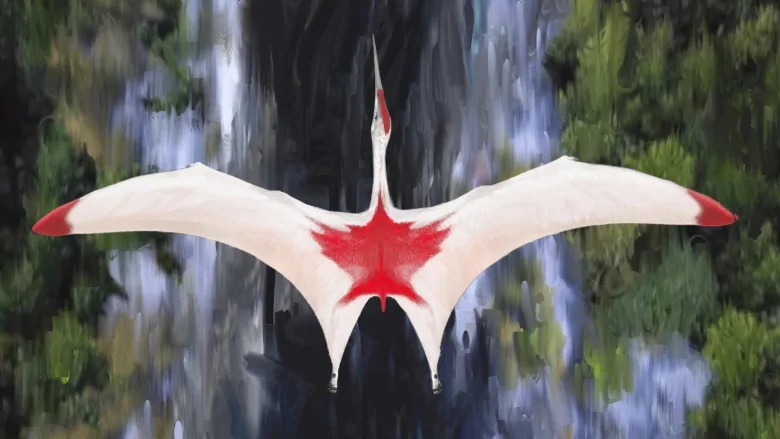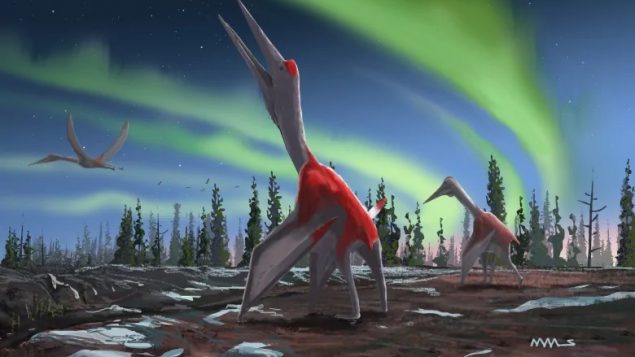Ah, so romantic and so Canadian (not necessarily antithetical, by the way).
Roll this around on your lips: “Frozen Dragon of the North Wind.”
Nice, eh?
It’s the secular name of Cryodrakon boreas.
Who? What?

Cryodrakon belonged to a group of giant pterosaurs called Azhdarchids. In this illustration, a giraffe is compared to Cryodrakon’s similar-sized relatives Arambourgiania philadelphiae, middle, Hatzegopteryx thambema, right, and a human. (Mark Witton)
Well, seventy-seven million years ago during the Cretaceous period, during the Age of Dinosaurs, there lived flying reptiles that weighed as much as several adult humans combined, had the wingspan of a small plane and ran like giraffes.
And where did they live?
In Canada, in what is now called Alberta.
Now, they have a name.
Researchers have identified them as a new species.

Cryodrakon boreas, seen in an artist’s reconstruction, is a new species of pterosaur identified from bones found over several decades in Alberta’s Dinosaur Park Formation in the provincial park. Its wing span stretched about 10 metres from tip to tip. (David Maas)
A paper published Tuesday in the Journal of Vertebrate Paleontology says the species was identified from fossils collected by
paleontologists and local residents over several decades in Alberta’s Dinosaur Provincial Park.
The study describes animals that would have been about half as tall as a giraffe with wings that stretched about 10 metres from tip to tip.
“These things have great, big long necks as well,” says David Hone, lead author of the paper and a paleontologist at Queen Mary University in London.
Hone says that in addition to flying, they would have walked and run on all fours, likely with a giraffe-like gait that moves both legs on one side at the same time to avoid tripping.
As for the name?
“It’s a beautiful stark landscape in winter, but dear God it’s cold and snowy,” Hone told CBC News, referring to the reptiles” habitat.
“We wanted to try and evoke that.”
With files from CBC, CTV, National Geographic, Washington Post







For reasons beyond our control, and for an undetermined period of time, our comment section is now closed. However, our social networks remain open to your contributions.